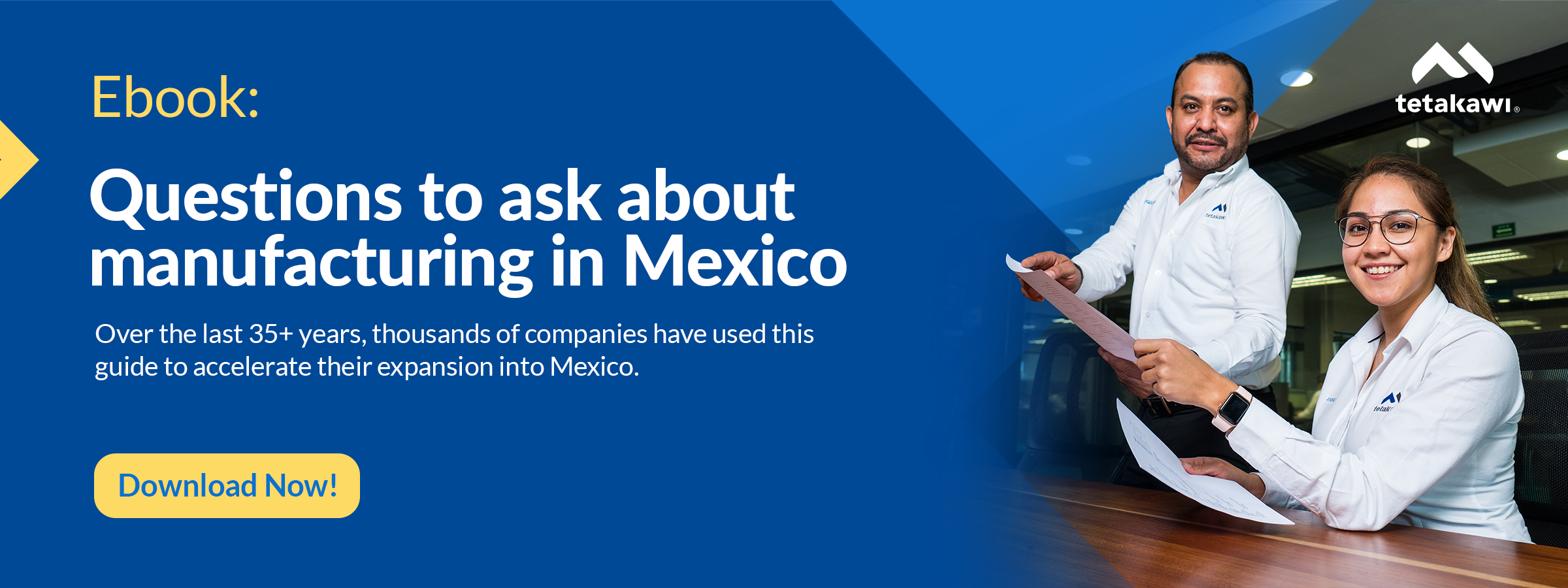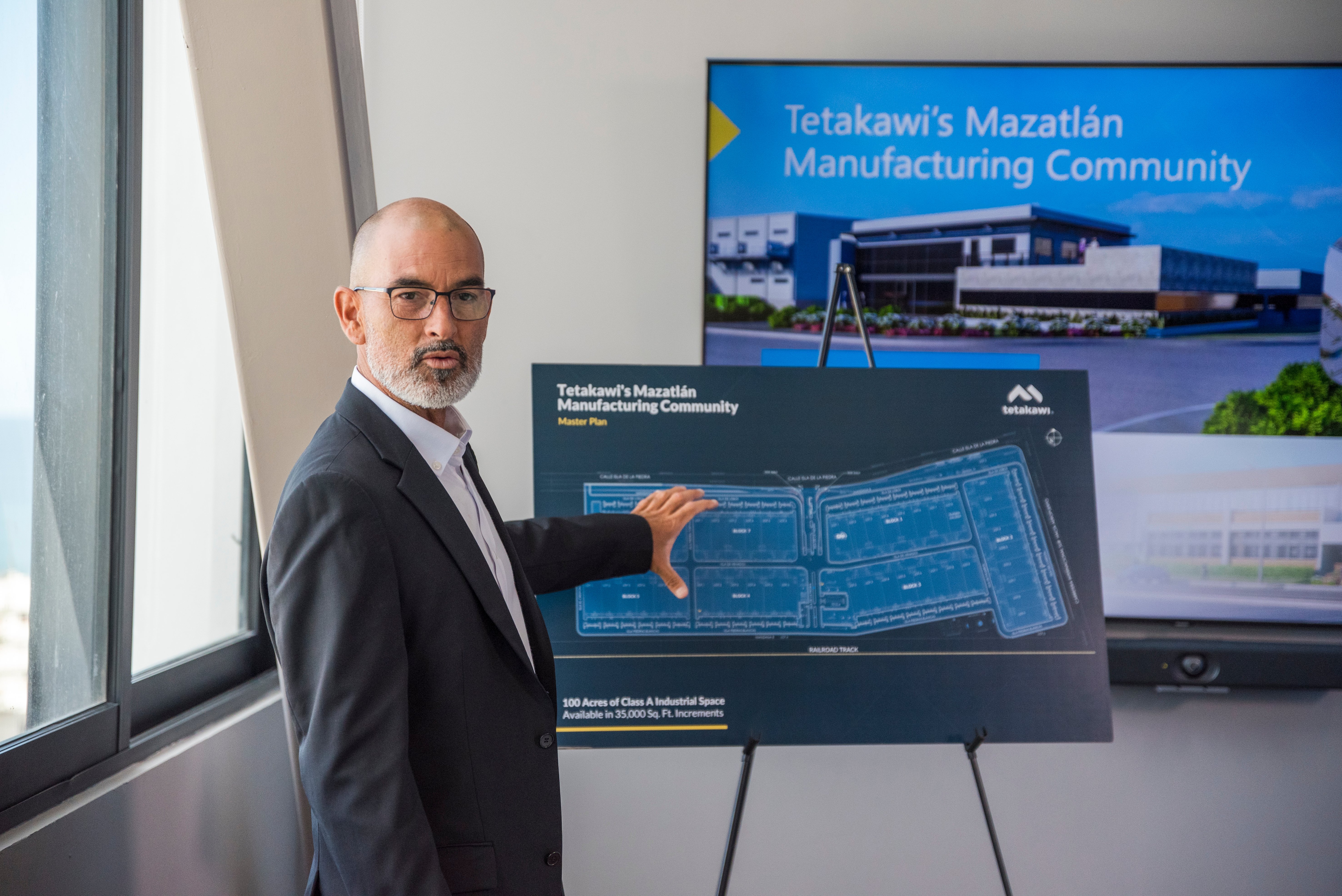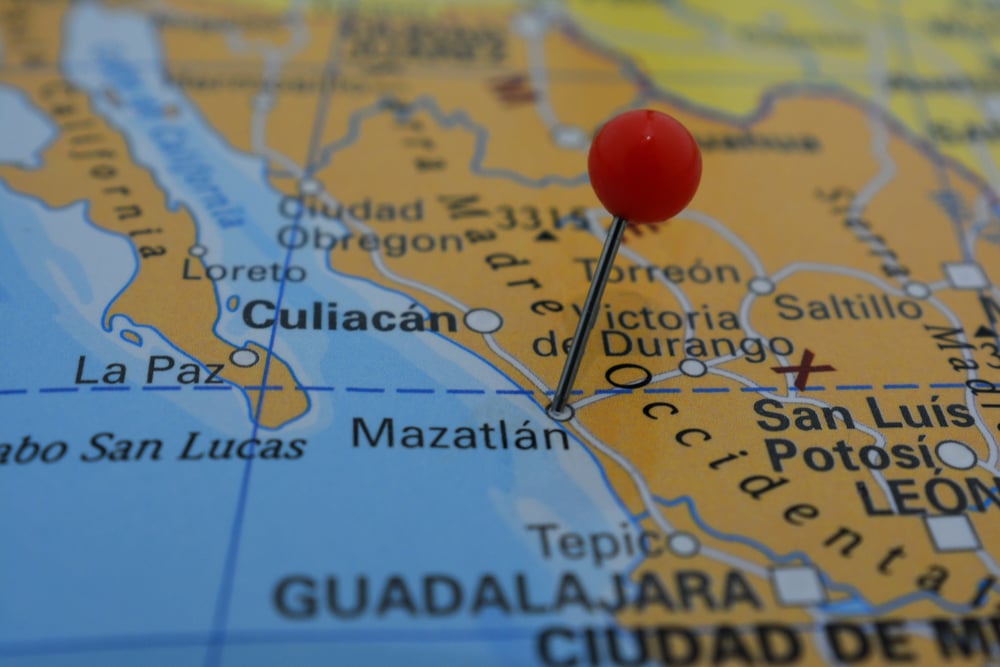Interest in manufacturing in Mexico is hotter than ever. The Wall Street Journal (WSJ) reports that after a decline in foreign direct investment in 2020 due to the COVID. New investments in Mexico are at the strongest levels since 2013. Of the $32.1 billion in foreign direct investment during the first nine months of 2022, $11.6 billion was in manufacturing alone.
There is a range of reasons behind this uptick. Still, proximity to the U.S. market is the primary reason the Mexican government reports that more than 400 companies have expressed interest in relocating production from Asia to Mexico, according to the WSJ article.
Manufacturing labor shortages are also driving renewed interest in manufacturing in Mexico. A May 2021 report from Deloitte and The Manufacturing Institute called labor shortages in the United States a $1 trillion problem, with expectations that as many as 2.1 million U.S. manufacturing jobs will remain unfilled through 2030.
"Being able to hire enough people at our U.S. plants to support our growth was a real challenge," Sam Rosen, president of Ollin Plastics, the plastic molding unit of Minnesota-based ATEK Companies, told the WSJ. According to Rosen, U.S. labor shortages motivated the company's decision to invest approximately $10 million in a factory in Monterrey, Mexico.
Mexico has long attracted manufacturers interested in lowering costs while reliably delivering goods to the United States and worldwide. However, this rapid growth in interest in manufacturing in Mexico highlights foreign investors need to understand Mexico's manufacturing ecosystem better. Many of the challenges that companies are facing in the U.S., such as labor shortages and high real estate costs, are also challenges companies are facing in some parts of Mexico.
Tradeoffs emerge as nearshoring increases
As more companies look to nearshoring in Mexico as a solution to their business challenges, many begin by treading a familiar path. The border cities best known for nearshoring are finding that demand for industrial space is outpacing availability.
As the WSJ reports, Tijuana – the site of one of the world’s largest export hubs for televisions and electronics – industrial parks are near full capacity. This is despite the fact that nearshoring has increased costs in these industrial parks by an average of 14% per square meter, according to a recent article in Forbes. As leasing availability remains below 1%, the article notes that the price of new Class A spaces has exceeded $8 dollars per square meter in parts of Tijuana.
Ciudad Juárez has also seen a spike in leasing prices, up to $7 per square meter. This high demand mirrors what’s happening just across the nearby border in El Paso, Texas, where demand for warehouse space and manufacturing interest is reaching historic highs.
With this investment in industrial space comes a demand for workers. As of Jan. 2023, Juarez had created 19,000 new year-over-year jobs, compared to 5,800 in El Paso, according to the Paso del Norte Economic Indicator Review from the Hunt Institute at the University of Texas at El Paso. The vast majority of the new jobs in Juarez – 11,800 – are in manufacturing. While workers are coming to Juarez to fill this need, there’s historical evidence that many of these workers will return from the border to homes in Mexico’s interior cities. Turnover in this area can range from 4% to 15% each month, inflating recruitment costs for manufacturers.
Real estate isn’t the only area where the influx of manufacturers is overburdening capacity. Monterrey, Mexico’s industrial capital, was ravaged by a water crisis in the summer of 2022 as the result of a historic drought. A punishing climate, in combination with dramatic population growth and dated infrastructure, led to water shortages across the city. While changes have been made to the water infrastructure, it may give manufacturers a reason to pause and ask more questions about infrastructure preparedness before they invest.
It’s these, among other challenges, that have foreign investors evaluating locations further south to avoid facing the challenges they hoped to avoid at home.
Site selection planning maximizes advantages
Manufacturers taking a more scrutinizing approach to site selection recognize that the key to achieving long-term success in Mexico is to operate in a location that provides quick market access and operational predictability.
Locations like Hermosillo, Sonora, and Saltillo, Coahuila make sense for manufacturers that do not want to run into the same problems they are already facing in the United States.
Hermosillo, a well-known hub for the automotive industry, sits 175 miles south of Nogales, Arizona. The city is part of a broader network of Mexico manufacturing cities that includes nearby Empalme and Guaymas. This network provides ample labor availability. In addition, Sonora’s 17 universities and high levels of post-secondary education enrollment mean manufacturers here have access to degree-holding managers, engineers, and direct laborers. This area tends to see lower wages than found along border states, as well as lower turnover rates.
Saltillo, known as the “Detroit of Mexico,” is 210 miles south of McAllen, Texas. It’s also a mere 50 miles west of Monterrey, providing proximity to the big brand manufacturers without the associated costs. The metro area is home to a population of more than 984,000 and a highly skilled and productive workforce. Due to the emphasis on manufacturing in Saltillo – a sector that employs approximately 40% of the city's economically active population – the city has invested in maintenance to ensure infrastructure reliability. During the 2022 drought, for example, Saltillo had a consistent water supply despite the challenges in nearby Monterrey.
Evaluate priorities alongside tradeoffs
The challenges pushing companies to evaluate Mexico as an ideal location for manufacturing can serve as guideposts for selecting the right site in Mexico. Alongside their cost analysis, companies should consider the potential for labor availability in a decade’s time. It will be important for manufacturers to ensure they have access to the labor they need not just today but long into the future.
Tetakawi works to connect manufacturers with the workforce solutions they need to succeed in the long term. This journey can start today. Our Manufacturing Communities in Hermosillo and Saltillo have move-in ready buildings, on-site support services, and amenities designed to support the labor needs of a diverse set of industries. Talk to a Tetakawi expert to discover which Manufacturing Community is right for you.
Subscribe
Sign up and stay informed with tips, updates, and best practices for manufacturing in Mexico.






